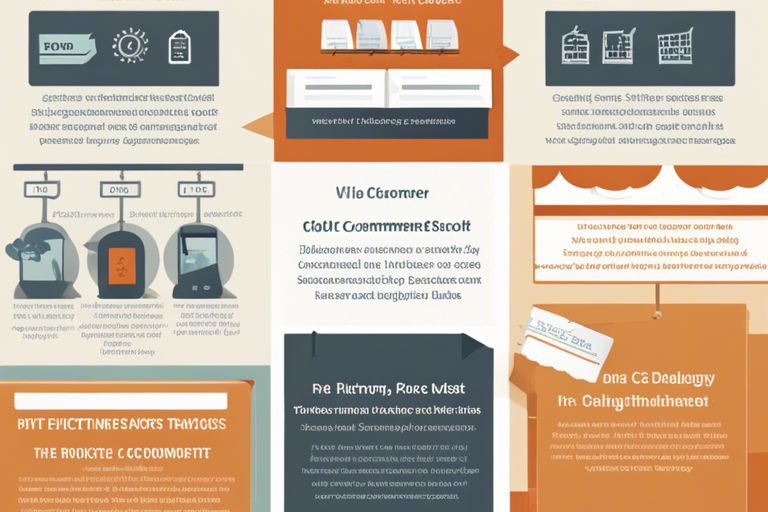Efficient Product Catalog Management For Your E-commerce Website

Just imagine having a perfectly organized product catalog that drives sales and boosts customer satisfaction on your e-commerce website. The key to running a successful online store lies in efficient product catalog management, where every product is showcased effectively, accurately, and compellingly. Avoid the danger of losing customers due to a messy or confusing layout by implementing a streamlined system that makes browsing and purchasing a breeze. By organizing products strategically, you not only enhance the customer experience but also improve your website’s performance and ranking on search engines. Learn how to take control of your product catalog and watch your online business thrive!
Key Takeaways:
- Streamline Product Organization: Efficiently categorize products into logical groups and subcategories to make navigation easier for customers.
- Regularly Update Product Information: Keep product descriptions, prices, and availability up to date to provide accurate information to customers and avoid potential frustrations.
- Implement Search and Filter Options: Enable search functionality and filters to help customers easily find the products they are looking for, enhancing their shopping experience and increasing conversion rates.
Mastering Product Data
Key Elements of Product Information
Any successful e-commerce website relies heavily on mastering product data. Key elements of product information include product names, descriptions, categories, attributes, pricing, and availability. Ensuring accuracy and consistency across these elements is critical for providing a seamless browsing and shopping experience for your customers.
Managing Data Across Multiple Channels
Any savvy e-commerce entrepreneur knows the importance of managing data across multiple channels. To stay relevant and competitive in today’s digital landscape, you need to have a consistent presence across various platforms such as your website, marketplaces like Amazon and eBay, social media, and more. By maintaining consistent and up-to-date product data across all channels, you can reach a wider audience and drive more sales.
Multiple platforms mean multiple opportunities to connect with potential customers. However, it also presents the challenge of keeping all product information consistent and up-to-date across different channels. Failure to do so can lead to confusion among customers, affecting their trust in your brand and resulting in lost sales. By leveraging tools and technologies that help streamline data management, you can ensure cohesiveness in your product information and deliver a superior shopping experience no matter where your customers find you.
Catalog Structure and Organization
Categories and Subcategories that Convert
With a well-thought-out categorization strategy, you can guide your customers smoothly through their shopping journey. Organize your products into clear and intuitive categories and subcategories that make sense to your target audience. Think about what will help them find what they need quickly and easily. Keep in mind that simplicity is key here – don’t overwhelm your visitors with too many options.
Boosting Discoverability with Effective Taxonomy
That’s where effective taxonomy comes into play. Creating a structured and hierarchical taxonomy for your products can significantly improve searchability and navigation on your e-commerce website. By using relevant keywords and terms that your customers are likely to search for, you can enhance the overall user experience and increase the likelihood of conversions. Make sure each category and subcategory is optimized for search engines to drive more organic traffic.
Understanding your audience’s behavior and preferences is crucial when designing your taxonomy. By analyzing data and monitoring trends, you can continuously refine and optimize your taxonomy to meet the changing needs of your customers. This iterative approach will ensure that your product catalog remains relevant and competitive in the fast-paced e-commerce landscape.
Streamlining Your Workflow
Automation is Your Best Friend
For e-commerce businesses, time is money. Automation can be a game-changer when it comes to managing your product catalog efficiently. Utilize tools and software to automate repetitive tasks such as updating product information, pricing, and stock levels. This will not only save you time but also reduce the risk of human error.
Consistency is King: Maintaining Your Catalog
Best believe, consistency is key when it comes to managing your product catalog. Regularly audit your listings to ensure accurate and up-to-date information. Ensure that product descriptions, images, and specifications are consistent across all platforms. This will improve customer trust and loyalty.
Workflow: Implement a structured workflow that includes regular checks and updates to your product catalog. This will help you stay organized and prevent any discrepancies that could harm your business. By prioritizing consistency and utilizing automation tools, you can streamline your workflow and focus on growing your e-commerce business.
Enhancing User Experience
High-Quality Images and Descriptions
On your e-commerce website, visuals are everything. High-quality images paired with detailed and accurate product descriptions are necessary to capture your customer’s attention. Invest time and resources into creating stunning visuals that showcase your products from every angle. Make sure your descriptions are informative, engaging, and highlight the key features and benefits of each product.
Leveraging Reviews and Ratings
To build trust and credibility with your customers, leverage reviews and ratings on your product pages. Encourage your satisfied customers to leave feedback and ratings, as this social proof can significantly impact purchase decisions. Displaying positive reviews prominently can help sway potential buyers and reassure them of the quality of your products.
Understanding the power of reviews and ratings can make or break your e-commerce business. Positive reviews can build trust and loyalty among your customer base, while negative reviews can deter potential buyers. Use feedback to improve your products and customer service, and always respond promptly to any concerns raised by customers to show that you value their opinions.
Analytics and Improvement
Tracking the Right Metrics
Now, as you probe the world of product catalog management, it’s crucial to track the right metrics. Focusing on key performance indicators like conversion rates, customer acquisition costs, and average order value can provide valuable insights into the effectiveness of your product offerings. By constantly monitoring these metrics, you can make data-driven decisions to optimize your product catalog for better results.
Using Data to Drive Decision Making
An necessary aspect of efficient product catalog management is using data to drive decision making. By leveraging analytics tools and customer feedback, you can gain a deeper understanding of what products are resonating with your audience and what needs improvement. Understanding customer behavior and preferences allows you to tailor your product offerings to meet their needs, ultimately leading to increased sales and customer satisfaction.
Making informed decisions based on data can help you stay ahead of the competition and adapt to changing market trends. By harnessing the power of data, you can optimize your product catalog for maximum profitability and ensure that your e-commerce website remains competitive in the ever-evolving digital landscape.
To wrap up
The key to success for your e-commerce website lies in efficient product catalog management. By organizing your products in a systematic and user-friendly manner, you can enhance the overall shopping experience for your customers. Streamlining your catalog can lead to increased sales, improved customer satisfaction, and a stronger brand reputation. Do not forget, a well-maintained product catalog is not just a necessity; it’s a strategic advantage that sets you apart from the competition. So, put in the work, stay organized, and watch your online store thrive like never before!
